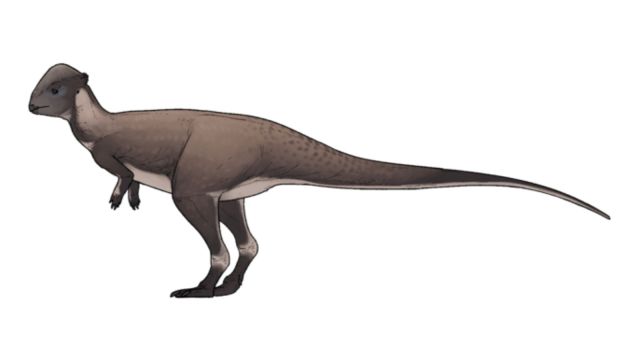Dinosaur fossils discovered in US’ Montana reveal new species from late cretaceous period
Five specimens now attributed to B. harmoni were discovered in the area, marking the first known pachycephalosaurid species from the Late Cretaceous period to be found in that region.
 The new dinosaur belongs to the family Pachycephalosauridae: a group of bipedal, dome-headed herbivores known for their thick skulls and upright stance. (In Photo: Life reconstruction of Brontotholus harmoni/ Wikimedia Commons)
The new dinosaur belongs to the family Pachycephalosauridae: a group of bipedal, dome-headed herbivores known for their thick skulls and upright stance. (In Photo: Life reconstruction of Brontotholus harmoni/ Wikimedia Commons) Researchers have identified a new species of dome-headed dinosaur from fossils unearthed in Montana. The dinosaur, named Brontotholus harmoni, was found in the Two Medicine Formation in Glacier County and is believed to have lived about 75 million years ago during the late cretaceous period, according to a study published earlier this month in the Zoological Journal of the Linnean Society.
Five specimens now attributed to B. harmoni were discovered in the area, marking the first known pachycephalosaurid species from the Late Cretaceous period to be found in that region, ABC News reported.
The new dinosaur belongs to the family Pachycephalosauridae: a group of bipedal, dome-headed herbivores known for their thick skulls and upright stance. Researchers said B. harmoni possesses a “distinct suite of morphological features” that differentiate it from other members of its family.
According to the study, the animal likely measured about 10 feet in length, with a large, ornamented dome suggesting it was the third-largest pachycephalosaurid ever found in North America. The thickened skull dome and bipedal gait indicate that B. harmoni was both robust and adapted for life on land.
Evolution shaped by ancient seas
The study notes that western North America during the Late Cretaceous period experienced repeated advances and retreats of the Western Interior Seaway, a vast inland sea that once split the continent. These shifting coastlines created new habitats and opportunities for species to evolve.
The paper explains that cycles of regression and transgression of this seaway allowed dinosaur clades such as tyrannosaurids, ceratopsids, hadrosaurids and pachycephalosaurids to evolve due to habitat area fluctuations related to sea level change.
Previous hypotheses had suggested, according to ABC News, that an unidentified pachycephalosaurid from the Two Medicine Formation might have been an evolutionary link between Stegoceras validum and Pachycephalosaurus wyomingensis. However, phylogenetic analyses in the new study refute that claim.
According to the journal’s abstract, B. harmoni was found to be distant from both Stegoceras and Pachycephalosaurus, rejecting the idea that it formed part of a direct ancestor–descendant lineage. Instead, the discovery shows that large-bodied pachycephalosaurids existed earlier than previously thought, as early as the Middle Campanian.






